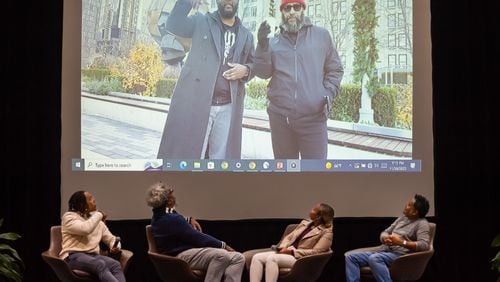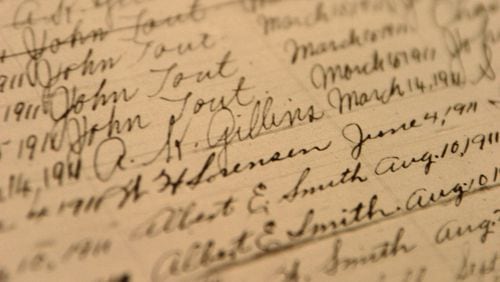MOVIE REVIEW
“Alive Inside”
Grade: B
Starring Oliver Sacks, Dan Cohen and Bobby McFerrin. Directed by Michael Rossato-Bennett.
Unrated. Check listings for theaters. 1 hour, 14 minutes.
Bottom line: It's not the most sophisticated documentary, but its power is indisputable
Think of them as Lazarus moments.
One by one, we are introduced to a series of elderly people with serious dementia. People who’ve barely said a word in years, who don’t recognize their own children, who sit around nursing homes like the living dead. Then Dan Cohen does something to them and it’s like a switch has been turned on. They become, all of a sudden, gloriously happy and alive.
As detailed in the joyous, unexpectedly uplifting “Alive Inside,” winner of Sundance’s coveted audience award for U.S. documentary, what Cohen has done is place iPod earphones on these people’s heads and played what family members have told him is their favorite music. The effect is miraculous.
There’s Alice, who so lights up on hearing “When the Saints Go Marching In” that she says in amazement, “I didn’t know I could talk so much.” And there is Henry, who goes from catatonic to effusive, speaking not just sentences but entire paragraphs, telling the world, “I’m crazy about music. Cab Calloway is my No. 1 guy,” before going into a perfect imitation of Calloway’s patter.
“Henry has been quickened, brought to life,” explains best-selling author Dr. Oliver Sacks, whose books include “Musicophilia: Tales of Music and the Brain” and who explains that the part of the mind that deals with music is the last to fall victim to dementia.
In a world drowning in bad news about dementia — an estimated 5 million Americans currently suffer, 10 million serve as their caregivers, with both numbers inevitably going up — “Alive Inside” is positively tonic.
“Alive Inside” began when Cohen, who’d been a social worker before founding Music & Memory to help bring individualized music to nursing homes, invited filmmaker Michael Rossato-Bennett to accompany him on a nursing home visit. That day led to more than a year of filming and the current feature.
Though it’s partially the way music gets wired into our brains that makes it so effective, there are other, psychological factors as well. The nursing home experience, we are reminded, is one in which residents lose choice in and control over their lives. Music, on the other hand, creates spontaneity, giving the listeners the chance to go off into a world of their own creation.
Yet, regardless of what we see in the film, barriers, largely economic, remain, and this in spite of the fact that, as one gerontologist says, “the money spent on drugs dwarfs what it would take to deliver personal music to every patient in America.” Because music doesn’t count as a medical interaction, “a $40 personal music system takes a lot more paperwork than a thousand-dollar antidepression pill.”
As much a plea to change the system as it is an examination of how music helps individuals, “Alive Inside” is not the most sophisticated documentary, but its power is indisputable
.
About the Author




